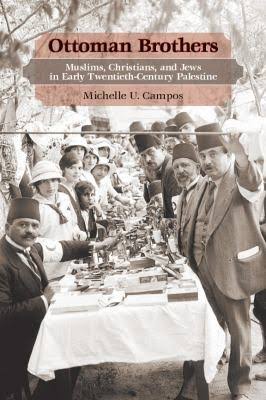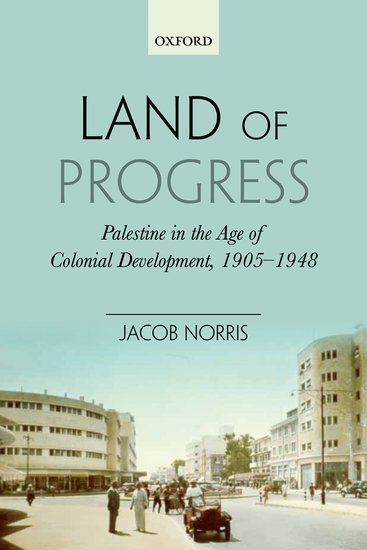-
Add to cartQuick view
Elizabeth F. Thompson. Justice Interrupted: The Struggle for Constitutional Government in the Middle East. Cambridge, MA: Harvard University Press, 2013. 432 pp.
Elizabeth F. Thompson. Justice Interrupted: The Struggle for Constitutional Government in the Middle East. Cambridge, MA: Harvard University Press, 2013. 432 pp.
$5.00Free!Add to cartQuick view -
Add to cartQuick view
Masquerade and the Performance of National Imaginaries: Levantine Ethics, Aesthetics, and Identities in Egyptian Cinema
Egyptian films from the 1930s through the 1950s reflected the diversity of Egypt’s cities. This article argues that a subtle but notable shift in the semiotics of otherness—from a Levantine idiom to a less fluid construction of ethno-religious identity—occurs over this period in Egyptian cinema. Analysis of the films Salamah fi khayr [Salama is Fine] and al-cIzz bahdala [Mistreated by Affluence], both released in 1937, reveals what the author identifies as a “Levantine” idiom. These films articulate an ethics of coexistence, adopt a visual language of inclusion, and represent identity as fluid and mutable. Postwar “ethnic comedies” such as Faṭimah wa-Marika wa-Rashil [Fatima, Marika, and Rachel, (1949)] and Ḥasan wa-Murqus wa-Kohayn [Hasan, Marcus, and Cohen (1954)], continue to take Egyptian diversity for granted. However, as this article demonstrates, the characteristics that had defined Levantine cinema—ethics, aesthetics, and fluidity of identity—are no longer present. All the films under discussion treat ethno-religious and national identity as performance. However, that being said, the valences attached to the comic appropriation of an identity not one’s own via role play, assumed identities, and sudden, disorienting class mobility shift over time in nuanced but significant ways. In establishing the idioms of “Levantine cinema” and “ethnic comedies,” this article also takes as a counterpoint the 2008 film Ḥasan wa-Murqus [Hasan and Marcus] which draws upon these earlier Egyptian cinematic traditions in constructing its own discourse of coexistence.
$5.00Free!Add to cartQuick view -
Add to cartQuick view
Michelle U. Campos. Ottoman Brothers: Muslims, Christians and Jews in Early Twentieth-Century Palestine. Stanford: Stanford University Press, 2011. 360 pp.
Michelle U. Campos. Ottoman Brothers: Muslims, Christians and Jews in Early Twentieth-Century Palestine. Stanford: Stanford University Press, 2011. 360 pp.
$5.00Free!Add to cartQuick view -
Add to cartQuick view
Jacob Norris, Land of Progress: Palestine in the Age of Colonial Development, 1905-1948 Oxford: Oxford University Press, 2013. 241 pages.
Jacob Norris, Land of Progress: Palestine in the Age of Colonial Development, 1905-1948. Oxford: Oxford University Press, 2013. 241 pages.
$5.00Free!Add to cartQuick view -
Add to cartQuick view
Unrest at the Gates of Aleppo: British Perspectives on the Bedouin Challenge to Public Security in Northern Syria, 1848-1913
Free!The political situation in the eastern Arab world during the colonial period was subject not only to the interests of the great powers of East and West but also to disturbances caused by tribal Arabs who found refuge in the desert. Although there has been much research on bedouin of both the nomadic and the sedentary tribes of Syria and its hinterland—mostly drawing on ethnographic aspects—little has been written on the tribes as a challenge to political stability. Aleppo is of special interest since it was an important city close to the desert frontier and was under permanent threat of bedouin raids. The city also was and still is a place of sectarian diversity, second only to Beirut, and all too often the Christian population was wedged between the Ottoman government and nomadic tribes. Dealing with the bedouin thus touches all aspects of an eroding Ottoman power that affected Levantine urban life and sectarian coexistence. This paper draws on previously unpublished archival sources of the British Consulate in Aleppo.
Add to cartQuick view -
Add to cartQuick view
Center or Frontier: Hungary and Its Jews, Between East and West
Free!In the history of Hungarian political thought, East and West served as counter concepts. The first part of the article presents and analyses the history of the Eastern and Western political orientations of Hungarian nationalism from the late eighteenth to the mid-twentieth century. Key representatives of these orientations are presented with their versions of Hungarian “usable past.” Each orientation (Eastern or Western) views the second orientation as “other.”
The second part of the article describes how Hungarian Jewish spokespeople dealt with Hungarian nationalism vis-à-vis growing anti-Semitism in Hungary in the late 1930s and early 1940s. Using the East-West metaphors, some Hungarian Jewish spokespeople tried to present Hungary’s anti-Semitic campaign as stemming from foreign, non-Hungarian sources.
Add to cartQuick view
- Home
- About JLS
- Issues
- Vol. 9 No. 1 | Summer 2019
- Vol 8 No 2 Winter 2018
- Vol. 8, No. 1: Summer 2018
- Vol. 7, No. 2: Winter 2017
- Vol. 7, 1: Summer 2017
- Vol. 6, Summer/Winter 2016
- Vol. 5, No. 2 Winter 2015
- Vol. 5, No. 1 Summer 2015
- Vol. 4, No. 2 Winter 2014
- Vol. 4, No. 1 Summer 2014
- Vol. 3, No. 2 Winter 2013
- Vol. 3, No. 1 Summer 2013
- Vol. 2, No. 2 Winter 2012
- Vol. 2, No. 1 Summer 2012
- Vol. 1, No. 2 Winter 2011
- Vol. 1, No. 1 Summer 2011
- Blog
- dock-uments
- Subscribe
- Submit
- Contact




